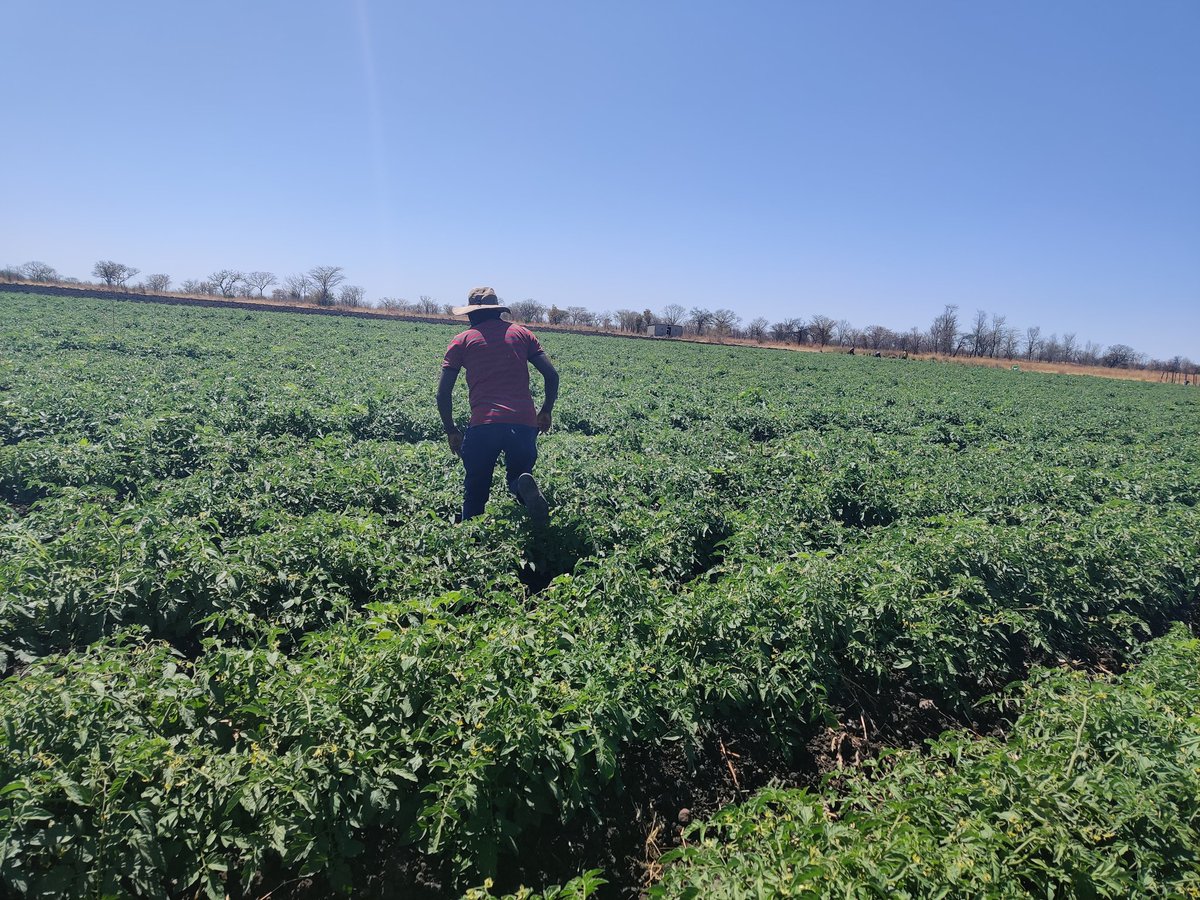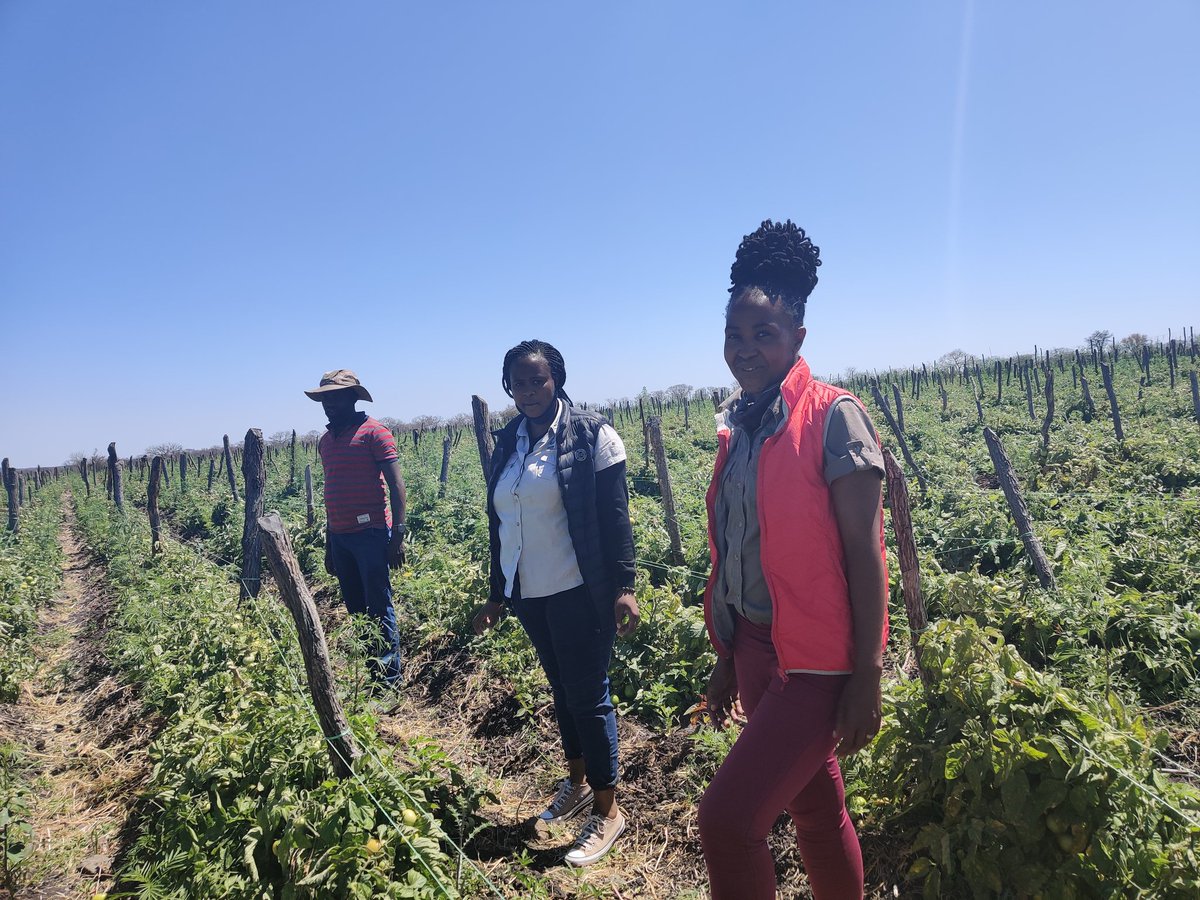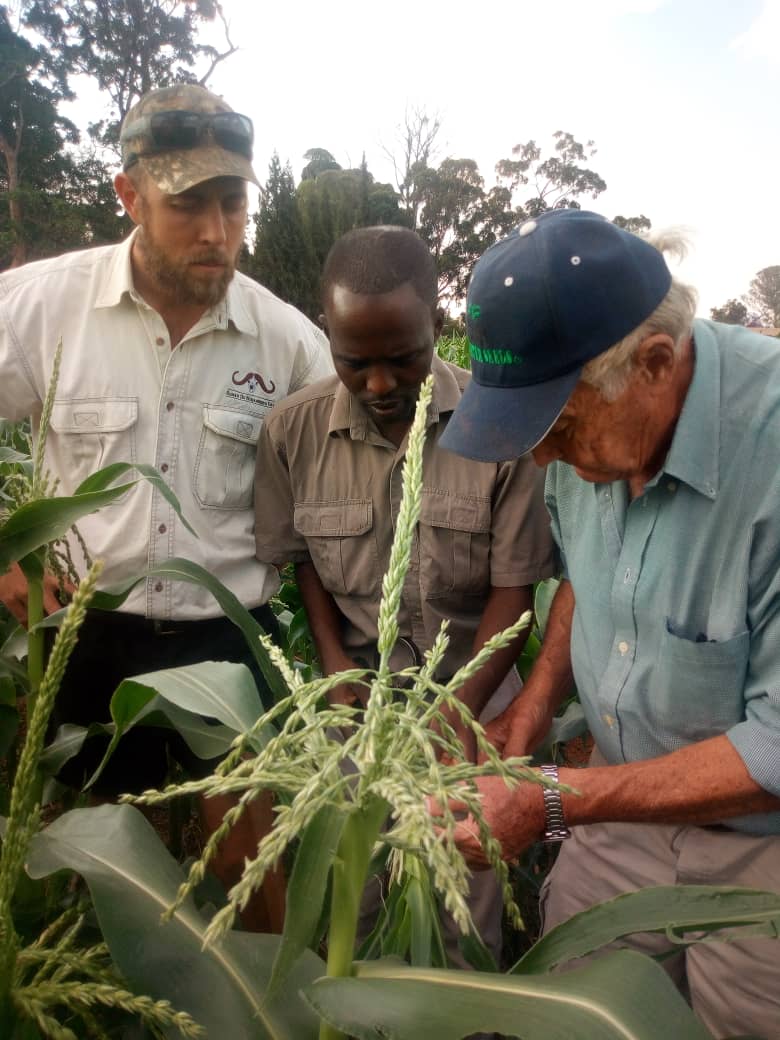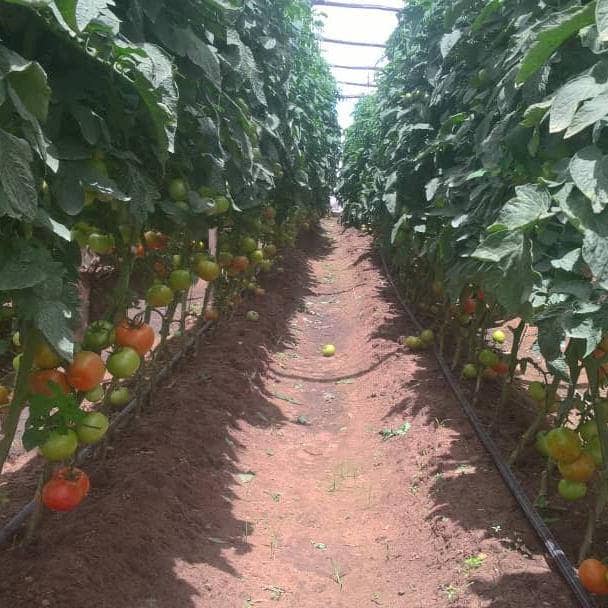
1/13 Tomato trellising and Pruning. The wet overcast conditions and low light intensity of the 2020-2021 rainy season has highlighted problems with trellising and pruning tomatoes. Loss of yield in tomatoes because of incorrect trellising was widespread, especially with the big 


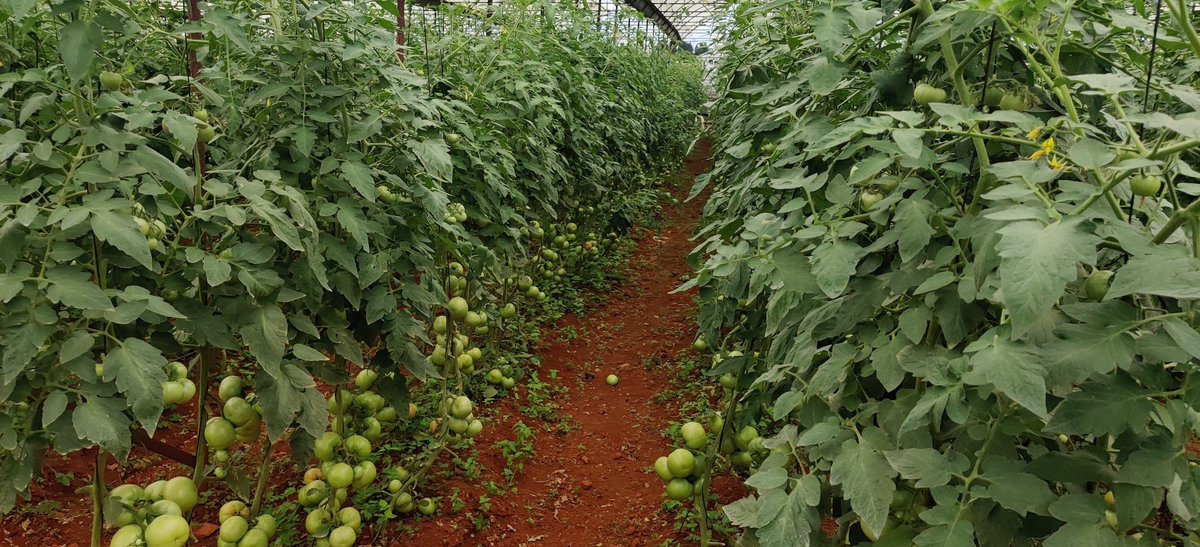
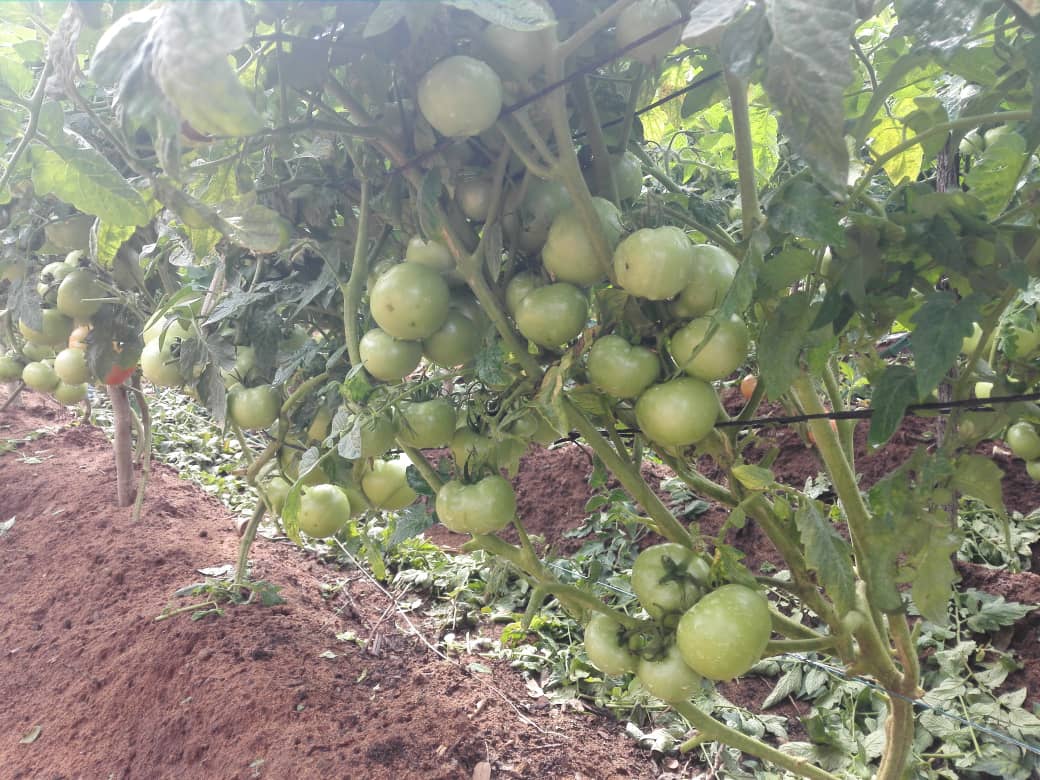
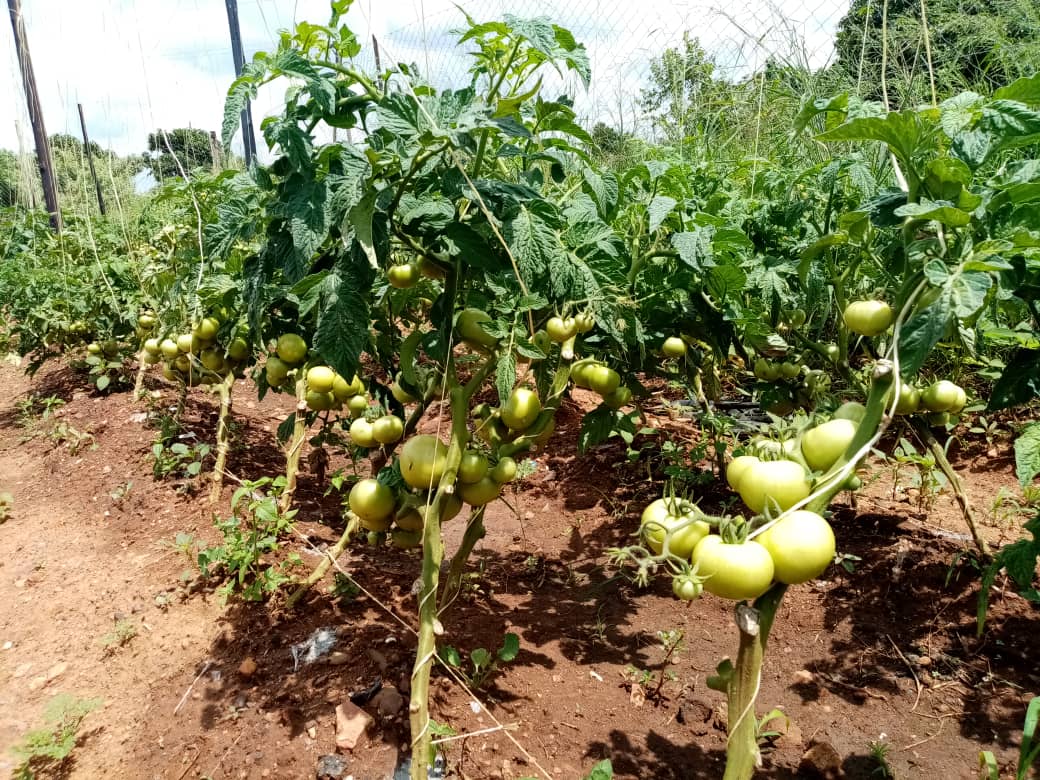
2/13 fast growing, high yielding long lasting varieties like Trinity, Star 9037 but determinate varieties like Star 9009,9011 were also affected. The objectives of trellising and pruning are manifold. Trellising significantly cuts down on harvesting loss, hail damage and sunburn
3/13 even with low growing ultra quicks like star 9008 and Zandra which are often not trellised. Apart from these objectives it's main objective must be maximizing of PAR(Photosynthetically Active Radiation) on the leaves and stems of the crops. The penetration of crop chemicals
4/13 into the crops must also be maximized. By trapping and utilizing sunlight the leaves of plants can manufacture carbohydrates usable energy, the basis of life. Obviously if the leaves are not in contact with sufficient PAR the efficiency of this process is reduced and yield
5/13 is decreased. There is a direct relationship between effective PAR and yield. Flowering is also affected by lack of PAR. Flowers are found on the stems of the tomato plants and if the level of light intensity is too low at the flowering site, flowering does not take place.
6/13 In order to increase the effectiveness of PAR, stems should be spread out like a fan on the trellis and the number of stems geared to maximum penetration of light and chemicals. The number of stems allowed to develop by the plant is extremely important. If too many stems are
7/13 allowed to develop too much energy is used to develop multiple growing tips, all fruit production slows down and decreases. More stems result in more but smaller fruit, produced later in the season. Fewer stems will produce fewer but larger fruit. Non performing leaves must
8/13 be removed by pruning to allow light and Chemicals to reach metabolizing leaves and stems. Non performing leaves include those out of reach of the light or affected by disease. Necrotic tissue does not photosynthesize and is also the source of further disease. Dead and badly
9/13 diseased tissue must be removed, but not healthy phosynthesizing leaves. They were many faults in the 2020/21 season. Big ,strong ,fast growing indeterminate varieties have been cut down to half their effective height eliminating the middle and top crops. In other cases
10/13 healthy, disease free effective leaves metabolizing at a high rate of photosynthesis were removed adversely affecting middle and late crops. Other farmers left too many stems for a specific variety and tied them too closely together so that light and chemicals did not
11/13 reach potentially productive tissue. Flowering and yield of the early crop was reduced in this situation. Ultimate maximum yield of each of each plant is determined by achieving the highest rates of metabolism and photosynthesis is possible and maintaining this rate for as
12/13 long as possible. Rate of metabolism and photosynthesis are related. All Starke Ayres varieties are bred for very high rates of metabolism and some are bred to maintain this and produce for a very long time. By utilizing photosynthesis to the maximum the farmer can achieve
13/13 the enormous yields these varieties can deliver. @FarmMakeoverCo @basera_john @Jamwanda2 @RedSoilFarm @corporatefarmg1 @OlokoobaKemi
• • •
Missing some Tweet in this thread? You can try to
force a refresh


